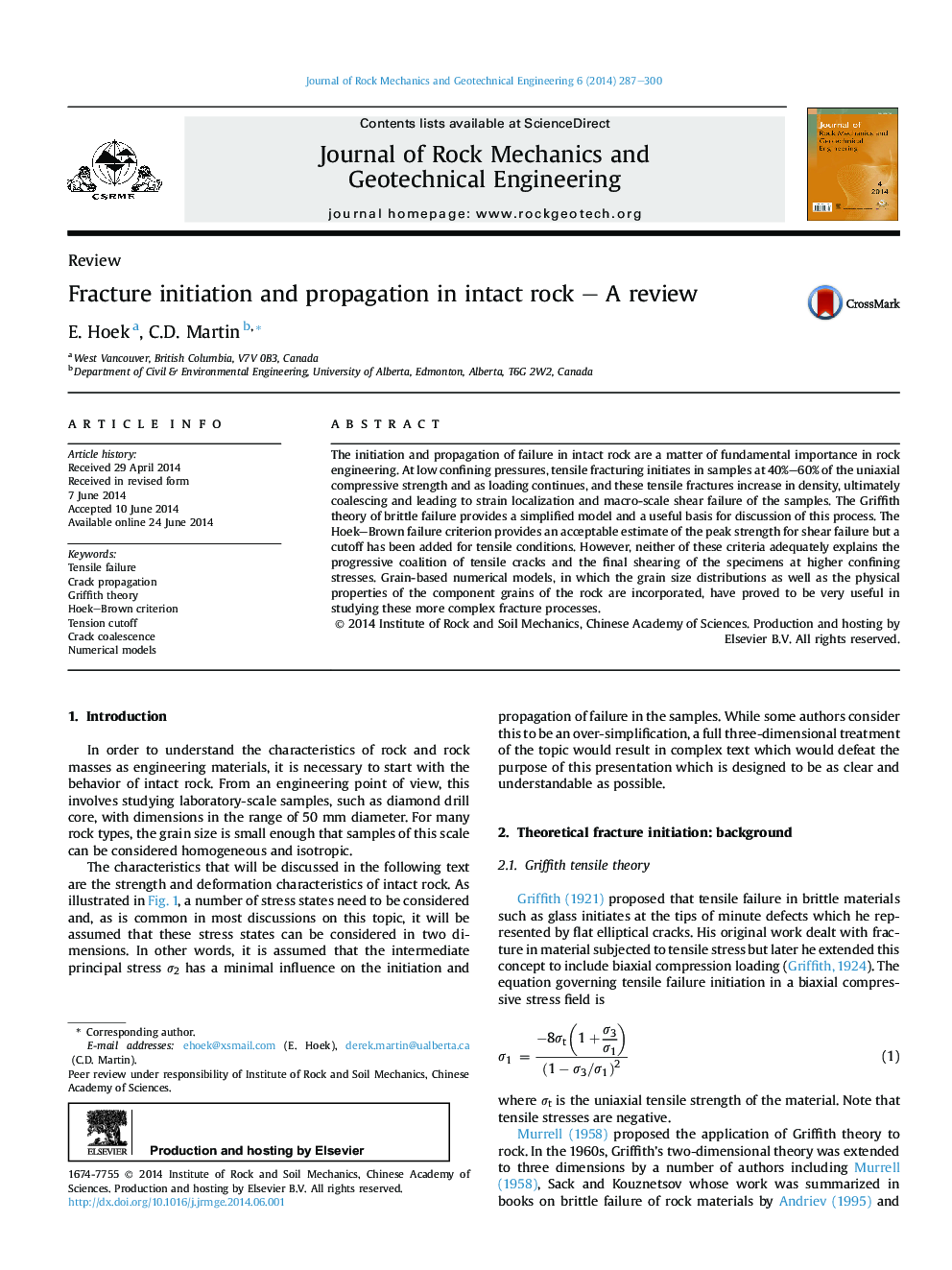| Article ID | Journal | Published Year | Pages | File Type |
|---|---|---|---|---|
| 286750 | Journal of Rock Mechanics and Geotechnical Engineering | 2014 | 14 Pages |
The initiation and propagation of failure in intact rock are a matter of fundamental importance in rock engineering. At low confining pressures, tensile fracturing initiates in samples at 40%–60% of the uniaxial compressive strength and as loading continues, and these tensile fractures increase in density, ultimately coalescing and leading to strain localization and macro-scale shear failure of the samples. The Griffith theory of brittle failure provides a simplified model and a useful basis for discussion of this process. The Hoek–Brown failure criterion provides an acceptable estimate of the peak strength for shear failure but a cutoff has been added for tensile conditions. However, neither of these criteria adequately explains the progressive coalition of tensile cracks and the final shearing of the specimens at higher confining stresses. Grain-based numerical models, in which the grain size distributions as well as the physical properties of the component grains of the rock are incorporated, have proved to be very useful in studying these more complex fracture processes.
